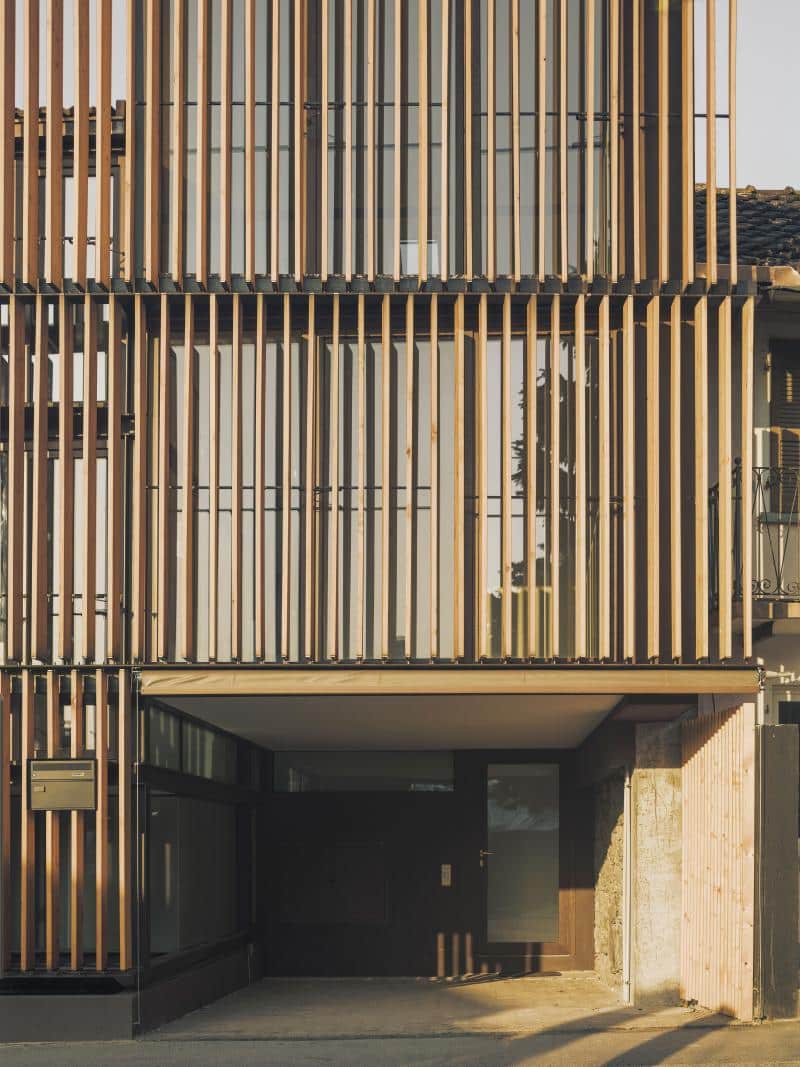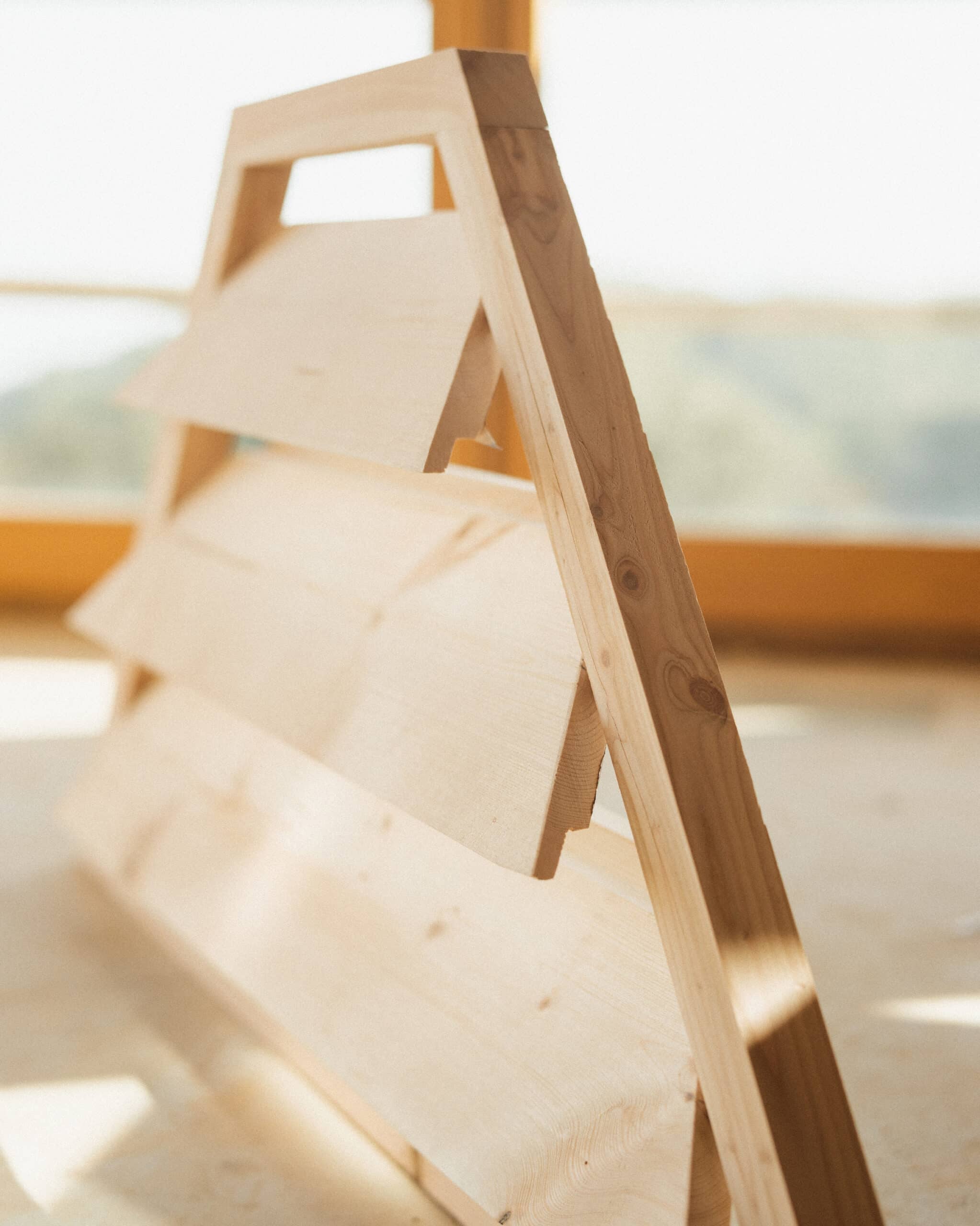BIOBASE(D) is a forest management and research center in the Pyrenees, dedicated to preventing forest fires through sustainable forestry and education. The building’s design—especially its structure—responds to the local climate, highlights the potential of timber as a construction material, and offers visitors and staff a unique experience in this remarkable forest base camp.

REFERENCES
Case Study – 01
- Location : Switzerland – Giubiasco
- Designer : Lokomotiv.Archs
- Project year: 2021
- Photos: Giorgio Marafioti




Case Study -02
- Location : France – Paris
- Designer : Seine Design
- Project year: 2019
- Photos: Sergio Grazia



RESIDENTIAL TOWER FACADE
For the envelope design, we focused on the tall residential tower, optimizing it for the region’s extreme climate. The façade consists of both closed sections and windows, which are covered with adjustable louvers. These louvers are designed to adapt to seasonal conditions.

THERMAL STRATEGIES
Through winter daytime, the building is characterized by cool temperatures during the day and a low angle of sun exposure. The louvers are angled to allow for solar gain to the interior while the glass provides a thermal envelope from the elements. Nights in the Pyrenees are characterized by cool temperatures all year long. Therefore heat retention becomes key. The louvers contain a reflective heat layer on their interior face. When shut in the evenings it adds an additional thermal insulation barrier to the glass which has the lowest thermal performance in the facade. While the majority of the year the climate of the Pyrenees is typically cool and requires heat retention, there is a brief period in the peak of summer where cooling is required. Therefore the louvers adjust their angle to block solar gain to the interior reducing thermal gain. At the same time, the interior glass windows open to allow for airflow through the entire structure providing a passive cooling solution.



FACADE SYSTEM
Given the building’s remote and hard-to-reach location, maximizing prefabrication was a priority. The façade of the residential tower is composed of prefabricated panels, each consisting of a closed section and an open section (window). These elements are assembled on-site and then attached to the building structure, streamlining construction while ensuring precision and efficiency.




SHUTTER DETAILS


PHYSICAL MODEL
1:1 MODEL
INDIVIDUAL SHUTTER SYSTEM






1:20 MODEL
TOP 3 FLOORS OF THE TOWER





